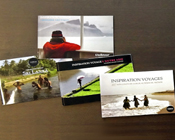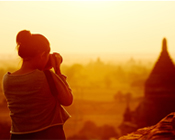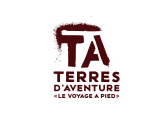Geography
Warm, gentle, crystal clear waters surround the Cuban archipelago. The mild tides and no strong currents of its waters, their virgin condition, the non polluted and well-preserved bottoms and the diversity of its underwater flora and fauna may be some of the reasons why so many diving lovers come to Cuba.
The Cuban reef forms a submarine string of coral around the entire archipelago, both north and south of the island. It is made up mainly of full-grown corals. Rocky buttresses of different structures are shaped by these corals, some incredibly resembling gothic pillars or majestic castles. They are the habitat and shelter of other marine species like sponges in the guise of cups, tubes or branches; sumptuous gorgonians that sway with the waves; algae of capricious growth, and in the crevices and pits: octopus, sea urchins, starfish, polychetes and crustaceans.
To complete the wonderful underwater world, astounding caves, vertical walls, tunnels and cliffs join this sea party, along with many other attractions of this submerged tropical garden.
Rivers
Most rivers in Cuba are relatively short and the water currents are quite strong. They flow through the mountains, creating beautiful waterfalls such as Salto del Caburni and Agabama Falls. Cuba's longest river is Cauto (about 240 km long) located in the east. There are also many reservoirs and lakes.
Fauna
Our flora and fauna is very rich and diverse. There are more than 300 protected areas that cover approximately 22 % of the national territory. Cuba treasures six areas declared Biosphere Reserve by UNESCO: Guanahacabibes Peninsula, Sierra del Rosario and Ciénaga de Zapata National Park, in the western; el Caguanes National Park in the center; and Baconao Park and Cuchillas del Toa in the eastern part of Cuba. More than 50 % of insular flora is endemic and its variety becomes evident if you take into account that in our country is represented 4 % of the total flora in the planet. Among these and most appealing are orchids, cactuses and the palm tree, which is the national tree.
Flora
Cuban fauna is very attractive. It still preserves rarest species like the zunzuncito -the tiniest bird in the world-, the tiniest frog, a very small bat called Mariposa and a scorpion not longer than 14 millimeters.
Endemic species are also seen when it comes to amphibians and reptiles. The crocodile, commonly found in crocodile breeding centers in the country, is very characteristic of Cuba.
Around 400 species of birds are estimated to exist in our island, and none of them are harmful to human beings.
Relieve
Cuba has a wide variety of landscapes, either plains or hilly and mountainous areas. The three most important mountain ranges in Cuba are Cordillera de Guaniguanico, in the western part of Cuba, Escambray in the center, and Sierra Maestra, in the east, with Turquino peak, the highest point in the country, with 1,974 meters above sea level.
The rest of the territory is plain and fertile. There are plenty of caves, some of outstanding beauty like Bellamar in Matanzas province.

 1 (866) 722-0909
1 (866) 722-0909
 QUOTE REQUEST
QUOTE REQUEST 





































